10 Important Components of a VoIP Carrier Network Explained
Today, almost everyone can pick their phones up and call someone halfway across the globe with a few clicks. As effortless as global communication has become, there are complex sets of technologies and components working together to make this possible.
The global communication market is valued at $1.34 in 2023 and is projected to grow at a CAGR of 2%. This means there’s a lot of money to be made here and not many risks.
So if you’re someone wanting a piece of the pie by becoming a VoIP carrier, you’re in the right place. This article will help you understand the 10 important components of a VoIP Carrier network.
Learning about these network components will also prove to be helpful for existing VoIP Carriers to improve and expand their network.
Let’s now dive straight into our list and master the essentials.
1. VoIP Endpoints
In a VoIP carrier network, VoIP endpoints like IP phones and softphones are key components that enable voice communication over the Internet. Let's delve into their roles and characteristics.
IP Phones

IP phones are hardware devices that resemble traditional telephones but are designed to work with VoIP technology. They connect directly to the internet or a local network, often via Ethernet or Wi-Fi.
They convert analog voice signals into digital data packets, which can be transmitted over the internet. They also decode incoming digital data packets back into audible sound for users.
There are various models of IP phones, including desk phones for business environments, conference phones for group calls, and cordless phones for mobility.
They come with different features and capabilities, such as touchscreen displays, multiple lines, and support for video calls.
Softphones

Softphones are software-based applications that run on computers, smartphones, or tablets. They emulate the functionality of physical IP phones through software.
These offer flexibility and mobility since they can be installed on a wide range of devices. Users can make VoIP calls using their preferred device, making them ideal for remote work or on-the-go communication.
Many softphones come with advanced features like video calling, instant messaging, and integration with other communication tools. They can also be customized with various plugins and add-ons to extend their functionality.
Softphones typically have user-friendly interfaces with familiar dial pads and call controls, making them accessible to a broad user base.
In a VoIP carrier network, both IP phones and softphones serve as endpoints that initiate and receive VoIP calls. They interact with the network infrastructure to transmit voice data as digital packets.
These endpoints are integral to the VoIP carrier network, ensuring that users can make reliable and efficient voice calls over the Internet while enjoying the benefits of modern communication features and flexibility.
2. Gateways
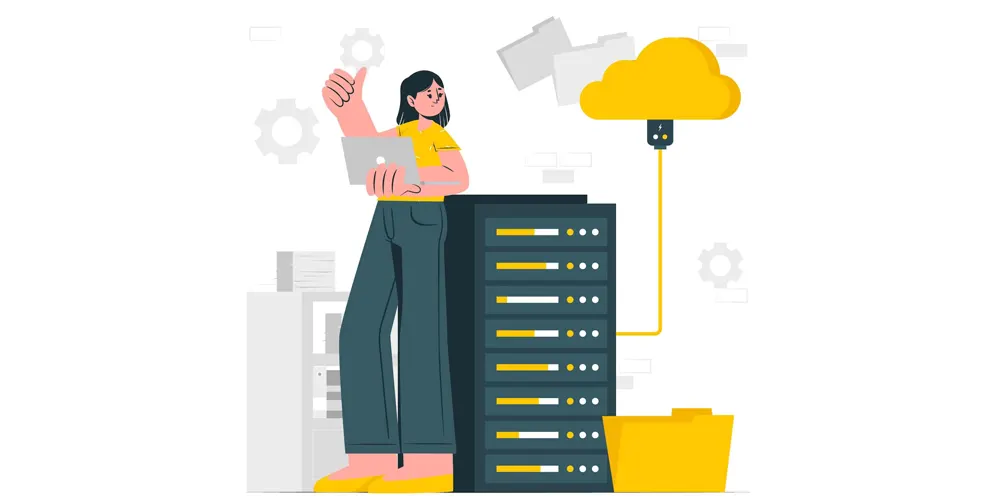
In a VoIP carrier network, media gateways and signaling gateways are essential components that play distinct roles in facilitating communication.
Let’s find out what each of them does.
Media Gateways
Media gateways, also known as MGWs, are responsible for handling the actual voice or multimedia data during VoIP calls. They bridge the gap between different types of networks.
These include networks such as traditional Public Switched Telephone Network (PSTN) and IP-based networks, ensuring seamless communication.
These gateways convert voice signals between different formats. For example, when a call originates from a traditional analog phone, the media gateway digitizes the analog voice signal into a digital format (e.g., using codecs) that can be transmitted over the IP network.
They also perform protocol translation, converting signaling protocols used in the PSTN, like SS7 (Signaling System No. 7), into VoIP signaling protocols such as SIP (Session Initiation Protocol) or H.323, ensuring compatibility between the networks.
Media Gateways handle Real-time Transport Protocol (RTP) streams, which carry the actual voice data packets between endpoints. This involves managing the encoding, packetization, and routing of the media streams.
Signaling Gateways
Signaling gateways, also known as SGWs, focus on the control and management aspects of VoIP calls. They handle the signaling information that sets up, maintains, and terminates calls.
They translate signaling protocols between different networks. For instance, they can convert SS7 signaling from the PSTN into SIP or H.323 signaling used in VoIP networks.
These gateways manage call setup, call routing, and call teardown processes. They ensure that calls are properly established and directed to the intended endpoints.
Signaling gateways can also perform number translation and mapping between different addressing schemes, such as E.164 (telephone numbers) and IP addresses.
They often incorporate security features to authenticate and authorize calls, protecting against unauthorized access and fraud.
3. Session Border Controllers (SBCs):

In a VoIP carrier network, Session Border Controllers (SBCs) are critical components that serve as the guardians of the network. They ensure the security, quality, and interoperability of VoIP communications.
Here's a detailed explanation of their role and functions.
1. Security and Firewall Functions
Perimeter Defense - SBCs act as a first line of defense for the VoIP network. They sit at the network perimeter and protect against various threats, including denial-of-service (DoS) attacks, unauthorized access, and intrusion attempts.
Access Control - SBCs enforce access control policies, allowing only authorized devices and users to connect to the VoIP network. They authenticate endpoints and apply security policies to incoming and outgoing traffic.
2. Interoperability and Protocol Translation
Protocol Mediation - VoIP networks often use different signaling protocols, such as SIP or H.323. SBCs perform protocol mediation, ensuring that different endpoints with varying protocols can communicate seamlessly.
Codec Transcoding - SBCs can transcode media streams, allowing endpoints with different audio or video codecs to communicate effectively. This ensures that voice and video quality remains consistent across the network.
3. Quality of Service (QoS) Management
Traffic Prioritization - SBCs prioritize VoIP traffic over the network to ensure low latency and high-quality communication. This helps in maintaining a reliable and clear voice or video call experience.
Bandwidth Management - SBCs can allocate and manage bandwidth dynamically, optimizing network resources for VoIP traffic during peak usage periods.
4. Call Handling and Policy Enforcement
Call Admission Control - SBCs enforce call admission policies to prevent network congestion. They can limit the number of concurrent calls and allocate resources appropriately.
Call Routing - SBCs also assist in call routing decisions. They ensure that calls are directed to the correct destination and that failover mechanisms are in place in case of network issues.
5. Monitoring and Reporting
Traffic Analysis - SBCs provide detailed visibility into network traffic, allowing operators to monitor and analyze call patterns, detect anomalies, and troubleshoot issues.
Logging and Reporting - They maintain logs and generate reports on network activity, which can be used for compliance, auditing, and performance optimization.
6. Topology Hiding
Session Border Controllers (SBCs) protect VoIP network topology by using techniques like Network Address Translation (NAT) and acting as proxies.
They obscure the internal network structure with NAT, shield endpoints through proxying, enforce firewall rules, and implement access policies, enhancing network security and privacy.
7. Emergency Services Support
SBCs often play a crucial role in supporting emergency services by ensuring that 911 calls and location information are properly routed to emergency responders.
All in all, Session Border Controllers (SBCs) are indispensable components in VoIP carrier networks. They provide a wide range of security, interoperability, quality, and policy enforcement functions.
4. IP PBX (Private Branch Exchange):

In a VoIP carrier network, an IP PBX (Private Branch Exchange) is a central telephony system that provides call routing and management services, primarily within an organization or business.
Let’s check our IP PBXs in detail.
An IP PBX is a telephony system that uses VoIP technology to handle voice and multimedia communications. Like a traditional PBX, an IP PBX serves as a private telephone exchange within an organization, enabling internal and external calls.
Key Functions
Call Routing - The primary function of an IP PBX is to route calls within the organization. It directs incoming calls to the appropriate extensions or departments based on predefined rules and dialing patterns.
Call Management - IP PBXs offer various call management features. This included call forwarding, voicemail, call recording, call waiting, and conferencing, to enhance communication efficiency.
Voicemail - They typically include voicemail systems, allowing users to receive and manage voice messages.
Auto Attendant - Many IP PBXs incorporate auto-attendant systems, which greet callers with pre-recorded messages and provide menu options for call routing.
Integration - IP PBXs often integrate with other communication tools like email and instant messaging, providing a unified communication experience.
VoIP Technology
IP-Based Communication - Unlike traditional PBXs that rely on analog or digital phone lines, IP PBXs use the Internet Protocol (IP) to transmit voice and multimedia data over data networks.
SIP Trunking - IP PBXs can connect to the public switched telephone network (PSTN) through SIP (Session Initiation Protocol) trunks provided by VoIP carriers, allowing organizations to make and receive external calls over the internet.
Unified Communications
Integration with Other Services - Many IP PBXs are part of unified communications solutions that integrate voice, video, messaging, and collaboration tools into a single platform.
Thus, an IP PBX is a crucial component in a VoIP carrier network. It provides organizations with a versatile and cost-effective means of managing their voice communication needs.
5. VoIP Servers
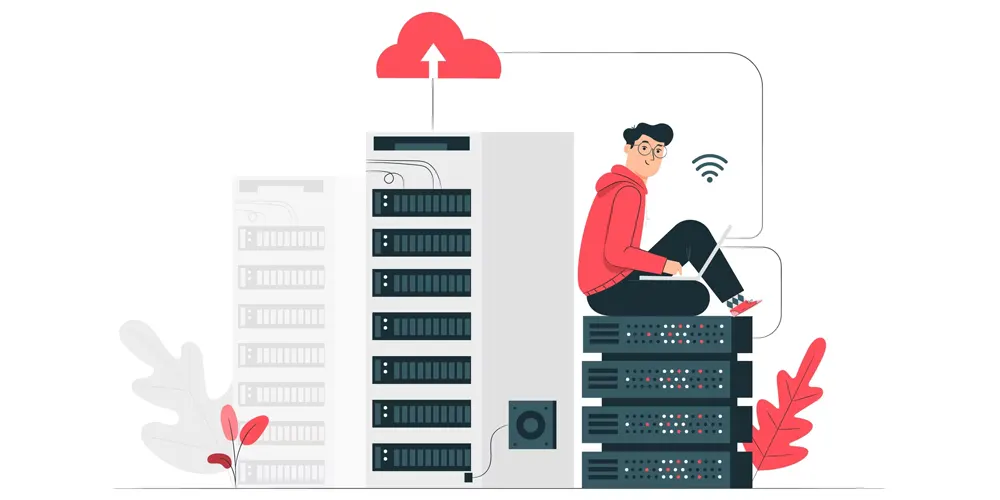
VoIP servers are fundamental components that facilitate the routing, processing, and management of voice and multimedia communication over the Internet. These servers play a crucial role in enabling VoIP services.
Let’s try to understand them in more detail.
VoIP servers are specialized computers or software applications designed to handle various aspects of VoIP communication. They act as central hubs for managing voice and multimedia traffic.
Key Functions
Call Routing - VoIP servers are responsible for routing calls to their intended destinations. They use protocols like SIP or H.323 to establish and control call connections between users or endpoints.
Protocol Conversion - They facilitate protocol conversion, translating signaling and media codecs between different devices and networks. This ensures that disparate endpoints can communicate effectively.
Call Control - VoIP servers manage call setup, call teardown, and call modification processes. They enforce call policies, handle call forwarding, and support features like call waiting and call hold.
Registration and Authentication - VoIP servers often oversee user registration and authentication. They ensure that only authorized users can access the network and make calls.
Media Handling - These servers manage the transmission of media streams (voice and video) between calling parties, optimizing bandwidth and ensuring quality of service.
Call Detail Records (CDRs) - VoIP servers generate Call Detail Records. These CDRs contain information about calls for billing, monitoring, and reporting purposes.
Types of VoIP Servers
Proxy Servers - Proxy servers handle call routing and forwarding, acting as intermediaries between users. They can help improve security and network efficiency.
Media Servers - Media servers are responsible for processing and transcoding media streams, ensuring that audio and video data is transmitted in the appropriate format.
Registrar Servers - Registrar servers manage user registration and authentication, keeping track of user locations and statuses.
Conference Servers - These servers facilitate multi-party conference calls, allowing multiple users to participate in a single call.
Voicemail Servers - Voicemail servers store and manage voicemail messages, enabling users to retrieve messages at their convenience.
Thus, VoIP servers are the backbone of a VoIP carrier network. They are responsible for routing, controlling, and managing the flow of voice and multimedia data.
They enable efficient and feature-rich communication services while ensuring reliability and scalability for carriers and service providers.
6. Media Servers
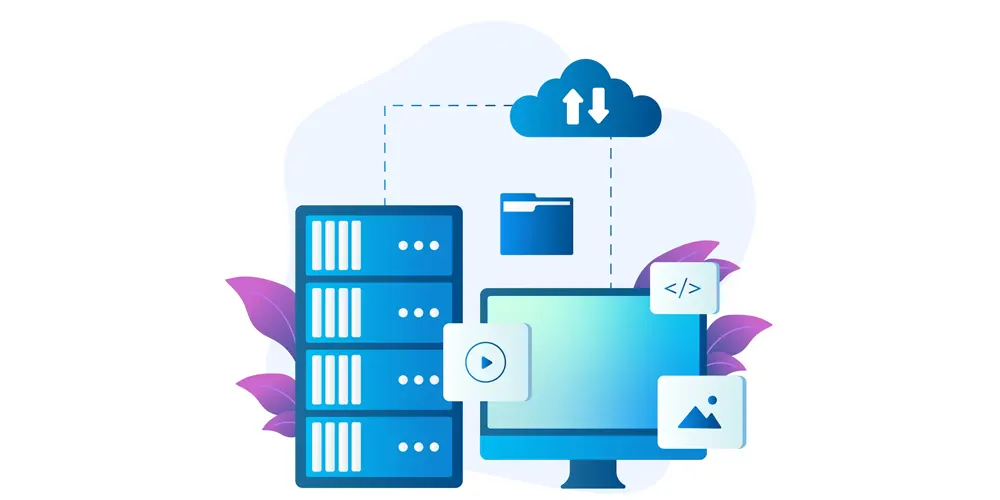
Media servers are specialized components that handle the processing, management, and manipulation of media streams, such as voice and video, during VoIP calls.
These servers play a crucial role in ensuring the quality and functionality of multimedia communication.
Key Functions
Codec Transcoding - Media servers can perform codec transcoding. This involves converting media streams from one codec format to another. This capability is essential for ensuring that different endpoints with varying codec support can communicate effectively without compromising call quality.
Voice Quality Enhancement - These servers can enhance the quality of voice calls by applying noise reduction, echo cancellation, and voice clarity algorithms to remove unwanted noise and improve audio fidelity.
Video Processing - For video calls, media servers handle video encoding and decoding tasks. They can adjust video resolution, frame rate, and quality based on network conditions and endpoint capabilities.
Interactive Voice Response (IVR) - Media servers often support IVR systems, allowing automated voice prompts and menu options for call routing and information retrieval.
Conferencing - Media servers enable multi-party conferencing by mixing and distributing audio and video streams to all participants in real time. They manage the synchronization of audio and video to ensure a seamless conference experience.
Voice Messaging - Some media servers incorporate voice messaging capabilities, allowing users to leave and retrieve voicemail messages.
Adaptive Bitrate Streaming - In video communication, media servers may adapt the bitrate of video streams dynamically based on network conditions to ensure smooth playback and minimal disruptions.
Deployment Scenarios
Centralized - In some VoIP networks, media servers are deployed centrally, serving multiple locations and users. This centralization simplifies management and maintenance.
Distributed - In other scenarios, media servers may be distributed across various network points, allowing for low-latency processing and reducing the load on central servers.
Redundancy and High Availability
For carrier-grade VoIP networks, redundancy and high availability are critical considerations. Redundant media server configurations ensure that if one server fails, another takes over seamlessly to minimize service disruptions.
7. VoIP Protocols

VoIP protocols are a set of standardized rules and procedures that govern the transmission, control, and management of voice and multimedia communication over the Internet or IP-based networks.
These protocols are essential for ensuring that VoIP calls are initiated, maintained, and terminated correctly.
Here's an explanation of some key VoIP protocols and their roles in a carrier network:
Session Initiation Protocol (SIP)
SIP is one of the most widely used VoIP protocols, primarily responsible for setting up, modifying, and terminating VoIP sessions (calls) between endpoints.
It handles call signaling, negotiation of codecs and media parameters, and the exchange of session information.
SIP is commonly used for initiating and controlling VoIP calls, video conferencing sessions, and other multimedia communications.
Real-time Transport Protocol (RTP)
RTP works in conjunction with SIP and is responsible for the transport and delivery of real-time audio and video data during VoIP calls.
It ensures that voice and video data packets are transmitted with low latency, minimal jitter, and in the correct sequence. RTP helps maintain call quality by managing media synchronization and timing.
RTP Control Protocol (RTCP)
RTCP complements RTP and provides control and monitoring functions for real-time media streams. It gathers statistics about media quality, including packet loss, jitter, and latency. It also supports feedback mechanisms for adjusting media parameters. RTCP data is crucial for monitoring and improving call quality.
H.323
H.323 is an older but still widely used protocol suite for multimedia communication, including VoIP. It offers a comprehensive framework for call signaling, media control, and security. H.323 is often used in video conferencing and enterprise VoIP solutions.
Media Gateway Control Protocol (MGCP)
MGCP is a protocol used to control the functions of media gateways in VoIP networks. It focuses on the setup and teardown of media connections and can control various media gateway functions, such as tone generation and call routing. MGCP is commonly used in scenarios where centralized control of media gateways is required.
H.248 (also known as MEGACO)
H.248 is similar to MGCP and is used for controlling media gateways in VoIP networks. It specifies how a media gateway controller (MGC) communicates with media gateways to set up and manage calls. H.248 is often used in carrier-grade VoIP networks for its scalability and flexibility.
TLS and SRTP
These are security protocols that provide encryption and authentication for VoIP traffic to protect against eavesdropping and tampering. TLS (Transport Layer Security) secures signaling, while SRTP (Secure Real-time Transport Protocol) encrypts and authenticates media streams.
These VoIP protocols work together to enable the initiation, control, and secure transmission of voice and multimedia data in a VoIP carrier network. They ensure that VoIP calls are established with the desired quality, security, and reliability.
8. Quality of Service (QoS) Mechanisms:

Quality of Service (QoS) mechanisms are a set of techniques and protocols designed to ensure the reliable and high-quality delivery of voice and multimedia traffic over the network.
These mechanisms prioritize VoIP traffic, mitigate network congestion, reduce latency, and maintain the desired level of service quality.
Let’s learn about the different functions that make up the QoS Mechanism.
Traffic Classification and Marking
Traffic classification involves identifying and categorizing different types of network traffic, including VoIP packets.
Once identified, VoIP packets can be marked with a Differentiated Services Code Point (DSCP) value or an IEEE 802.1p priority tag. These markings help routers and switches prioritize VoIP traffic over other data types.
Traffic Policing and Shaping
Traffic policing and shaping are used to control the rate at which VoIP traffic enters the network.
Policing enforces traffic rate limits, dropping or remarking packets that exceed predefined thresholds. Shaping smoothes traffic by buffering and delaying packets, ensuring a more consistent flow into the network.
Queue Management
Network devices, such as routers and switches, use queue management algorithms to determine the order in which packets are processed and transmitted.
VoIP packets are often placed in high-priority queues to minimize delays. This ensures that voice packets are processed before lower-priority data packets, reducing jitter and maintaining call quality.
Bandwidth Reservation
Bandwidth reservation allocates a specific amount of network bandwidth exclusively for VoIP traffic. By reserving bandwidth, carriers ensure that VoIP calls receive a consistent level of service, even during periods of high network utilization.
Call Admission Control (CAC)
CAC is a policy-based mechanism that controls the initiation of new VoIP calls based on available network resources. CAC prevents network overload by declining new call requests if the network lacks sufficient bandwidth or resources to maintain call quality for all active calls.
Packet Loss Mitigation
Packet loss can severely impact VoIP call quality. Mechanisms like Forward Error Correction (FEC) and jitter buffers are used to mitigate packet loss effects.
FEC adds redundant data to packets, allowing for the recovery of lost packets at the receiving end. Jitter buffers smooth out variations in packet arrival times, reducing the impact of packet loss and jitter on call quality.
Network Monitoring and Reporting
Real-time monitoring tools track network performance and quality metrics. Network operators can use these tools to identify and resolve issues promptly, ensuring that QoS is maintained.
Security Mechanisms
Security measures, including firewalls and intrusion prevention systems, protect the network from malicious attacks that could degrade QoS. These mechanisms prevent unauthorized access, DoS (Denial of Service) attacks, and other threats that could disrupt VoIP services.
Thus, QoS mechanisms in a VoIP carrier network are essential for guaranteeing the consistent, high-quality delivery of voice and multimedia traffic.
9. Firewalls and Security Devices
Firewalls and security devices are the components that safeguard the network from various threats and vulnerabilities. They play a vital role in protecting the integrity, confidentiality, and availability of VoIP services and communication.
Let’s learn about all the different security components herein and what they do.
Firewalls
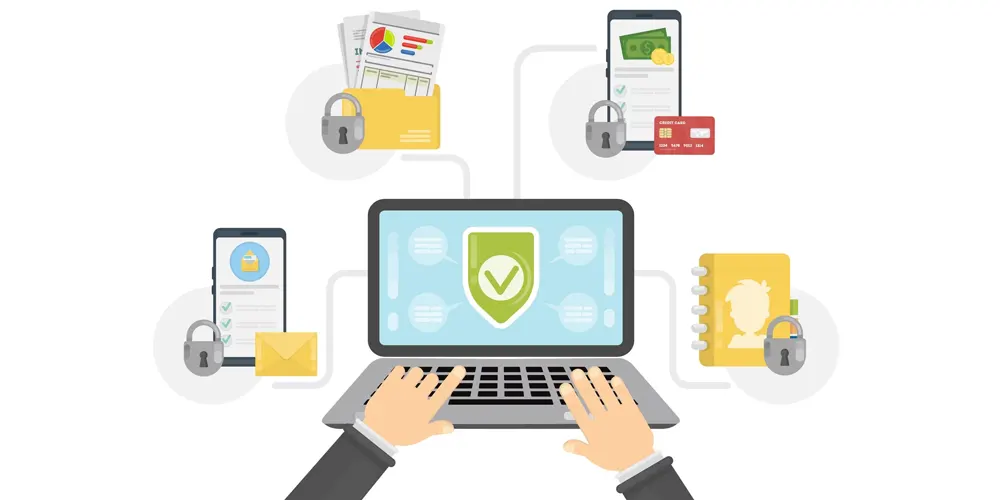
A firewall is a network security device or software application that acts as a barrier between a trusted internal network (e.g., the VoIP carrier network) and untrusted external networks, such as the Internet.
Functions
Packet Filtering - Firewalls examine incoming and outgoing data packets and apply predefined rules to determine whether to allow or block them. This filtering helps prevent unauthorized access to the network.
Stateful Inspection - Modern firewalls use stateful inspection to track the state of active connections. They ensure that incoming packets match a valid, established connection, reducing the risk of unauthorized access.
Application Layer Filtering - Some firewalls can inspect and filter traffic at the application layer, which is crucial for VoIP security. They can block specific VoIP protocols or known malicious traffic patterns.
Intrusion Detection and Prevention - Advanced firewalls can detect and prevent intrusion attempts, including attacks targeting VoIP services. They use signature-based or behavior-based methods to identify threats.
Deep Packet Inspection (DPI) - DPI involves analyzing the content of data packets to identify and block threats. This can include inspecting VoIP call setup and signaling traffic for suspicious patterns.
Network Address Translation (NAT) - Firewalls often perform NAT, which hides internal IP addresses. This makes it more challenging for attackers to identify and target individual devices within the network.
Security Devices

Security devices in a VoIP carrier network encompass a range of hardware and software tools designed to protect the network infrastructure and VoIP services.
Functions
Intrusion Detection and Prevention Systems (IDPS) - IDPS devices monitor network traffic for signs of suspicious or malicious activity. They can detect and respond to threats in real time, enhancing network security.
VoIP-Specific Security Appliances - Some security devices are tailored specifically for VoIP. They offer features like SIP firewalling, call authentication, encryption, and fraud detection.
Virtual Private Networks (VPNs) - VPN devices create secure, encrypted tunnels for VoIP traffic, ensuring that voice and data transmissions are protected from eavesdropping.
Anti-Malware Devices - These devices scan network traffic for malware, including viruses, worms, and Trojans, which could potentially affect VoIP services.
Authentication and Access Control - Security devices enforce user authentication and access control policies to prevent unauthorized users from accessing VoIP systems or data.
Secure Sockets Layer (SSL) Inspection Devices - SSL inspection devices decrypt and inspect SSL-encrypted traffic. This provides visibility into encrypted VoIP sessions and ensures that encrypted threats are detected.
All in all, firewalls and other security devices are crucial for protecting your VoIP network against unauthorized access, eavesdropping, fraud, and malware.
10. Billing and Accounting Systems:
Billing and accounting systems are responsible for managing and tracking the financial aspects of VoIP services. Having a good system in place is crucial as billing and accounting for VoIP calls is a very complicated task.
These systems play a crucial role in accurately billing customers, recording usage, and generating reports for accounting and business analysis.
Here's an explanation of what billing and accounting systems are and their functions in a VoIP carrier network.
Billing System
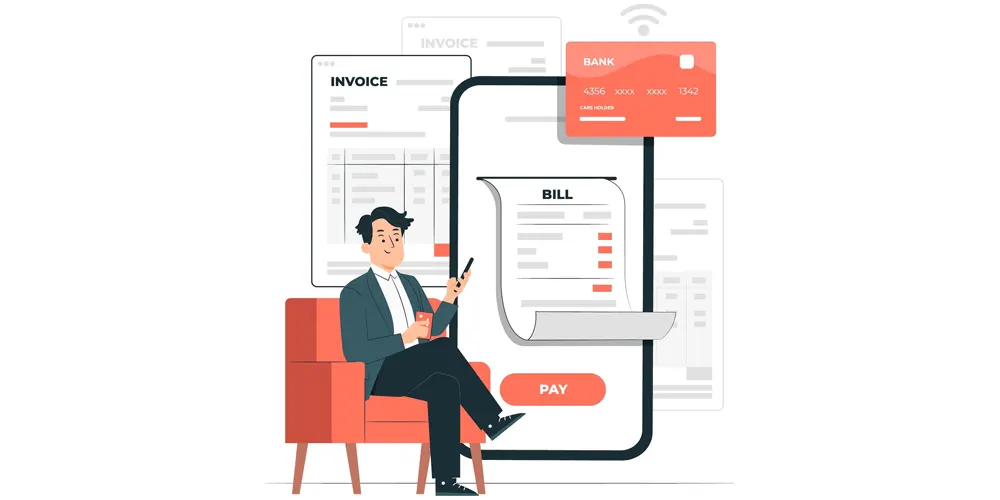
A billing system is a software platform that calculates and generates invoices for VoIP services consumed by customers.
Functions
Call Rating - The billing system rates VoIP calls based on factors such as call duration, destination, and any applicable rate plans or pricing tiers.
Invoice Generation - It generates itemized invoices detailing the usage charges for each customer, including call charges, additional services (e.g., voicemail, call recording), and any applicable taxes or fees.
Rate Management - The system manages rate tables and pricing structures, ensuring that the correct rates are applied to calls and services.
Billing Cycles - Billing systems support various billing cycle options (e.g., monthly, quarterly) and can prorate charges for partial billing periods.
Customer Account Management - Billing systems maintain customer accounts, track balances, and manage payment processing and collection.
Usage Analytics - They often offer reporting and analytics features that allow carriers to analyze usage patterns, identify revenue opportunities, and monitor the financial health of their VoIP services.
Accounting System

An accounting system in a VoIP carrier network is responsible for recording, tracking, and managing financial transactions related to VoIP services and operations.
Functions
Financial Recording - The accounting system records all financial transactions. Revenue from customer payments, expenses related to network maintenance, and vendor payments are among the things recorded herein.
General Ledger - It maintains a general ledger that categorizes transactions into accounts, enabling financial reporting and analysis.
Financial Reporting - Accounting systems generate financial statements, reports, and balance sheets. These provide insights into the financial health and performance of the VoIP carrier network.
Auditing and Compliance - They ensure compliance with financial regulations and industry standards by tracking financial data and transactions in a transparent and auditable manner.
Budgeting and Forecasting - Accounting systems support budgeting and forecasting activities, helping carriers plan for future expenses and revenue targets.
Revenue Recognition - These systems play a role in recognizing revenue according to accounting principles and standards, ensuring accurate financial reporting.
VoIP Carriers should ensure they have a capable billing and accounting system in place. A single system that does everything is preferable. If not, then one needs to ensure that both the accounting and billing systems integrate well together.
Conclusion
There’s so much more than meets the eyes when it comes to the things that make our world work. Communicating with anyone across the globe has become so effortless and easy that we at times take these capabilities for granted.
Behind the scenes, there’s so much more that goes on to make all this possible, to connect a whole world together. VoIP carriers play an important role in making global communication possible.
We hope this article helped you understand the important components that help VoIP Carriers deliver global communication to all!
There will be an additional article coming soon that will cover the less important yet necessary components of a VoIP Carrier Network.
























































































































